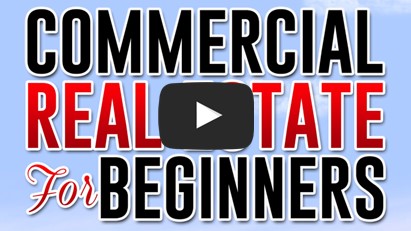
How can you get the upper hand when negotiating your property deals? After twenty years of negotiating my own and student deals, I’ve learned precisely how to do this using three persuasive strategies. I’m eager to share these tactics, and the significance of using them in every real estate deal you’re interested in landing.
Tactic 1: Decide on Your Take Price Before Making an Offer
A take price is the maximum price you are willing to pay for your real estate deal. As soon as you decide on your take price, put it in your back pocket. Don’t discuss it with anyone, except your coach. Don’t share it with the agent or the seller, this price is for you personally.
Coming up with a take price anchors you. It encourages you to fall in love with the numbers rather than the property. A critical mistake people make when starting out in real estate investing is becoming too emotionally attached to the property and ignoring the numbers. Negotiations can become very emotional causing individuals to overpay, but with a take price you’re anchored to your price. Having a take price helps you not overpay during negotiations.
Once you’ve settled on your take price, it’s time to make an offer. Your first offer should be your take price minus 5% or 10%. We do this because we anticipate them countering your initial offer. For instance, if your take price is $500,000, then your first offer would be approximately $450,000. If they counter offer you are in a position to take anything between your offer and your take price and still feel satisfied with the deal. Reject any offers over your take price or try to negotiate harder to keep it at or under your take price.
Negotiations are More Perception than Reality
I have an example to prove that that this is true, and I guarantee it will happen to you. You are making an offer on a deal and the seller is will say, “Your offer is too low. I have already had offers better than yours”. This statement is more perception than reality and is possibly false. The seller probably had a verbal offer that may have been better than yours, but it obviously did not materialize. If he had an offer better than yours, why didn’t he accept it? Don’t fall for this trick.
Tactic 2: Meet the Seller in Person When Negotiating
When you negotiate a deal on the phone or email, the seller is forming their own perception of who you are and it’s likely not a good one since you are negotiating a deal with them. The only way to overcome that negative image of you is by meeting the seller in person, enabling you to make a human connection with them. Forming a relationship with a seller can help give you the advantage in the negotiation.
For instance, we had a student that was stuck at $775,000 with the seller in negotiations and the deal was going nowhere. I advised the student to go meet the owner face-to-face, visit the property and walk around, ask questions, build rapport, and go for coffee afterwards. That’s exactly what they did. To make a long story short, in that short span of time, the price went down from $775,000 to $705,000. They saved $70,000 off the cost in just two hours, that’s $35,000 per hour. That’s what making a personal connection with the seller will do for you. I promise that when you meet the seller you will win. The human connection is essential in real estate negotiating. It’s more significant than you think.
Creative Real Estate
If you end up short on funds for your down payment or need to do something creative with your deal, like a seller carry carrying a second or master lease agreement, forging a human connection and meeting with the seller in person will increase your creative financing chances by 10 times.
When you meet with the seller in person during negotiations your real estate negotiation period is more about your relationship rather than how much cash you have in the bank. Real estate investing is and always will be a relationship-based business.
Tactic 3: No One Likes to be Coerced into Something
This persuasive strategy is very important to remember when negotiating a deal. A wise investor will convince the seller they’re in control by providing them with a quick out. Personally, I use this with my wife all the time and it works. (Sorry dear wife but I just need to share this, I hope you forgive me!)
Studies show that if you use affirming, subtle language such as, “You will probably refuse this Mr. Seller, but would you consider it?”, it increases their compliance dramatically. If you want the seller to agree to everything you want, not only do you need to say exactly what you want, but you also need to provide them with an out.
An example of this is, “Mr. Seller, would you cover the closing costs in order to close the deal?”. If you phrase it like that, he’ll likely refuse. Rephrase it like this, “Mr. Seller, would you cover the closing costs in order to complete the deal? You are free to say no of course, but would you consider it?”. Including that subtle, affirming language at the end, gives them the perception that you have put them back in control. They get to decide whether you proceed or not. A persuasive strategy to get what you want is to use subtle language and provide them a way out. This is scientifically proven, and it works.
Review of 3 Persuasive Negotiating Tactics for Real Estate Investors:
- Persuasive tactic number one is come up with your take price.
- Persuasive tactic number two is to meet the seller in person.
- Persuasive tactic number three is to subtly encourage the seller to think they are in control.



